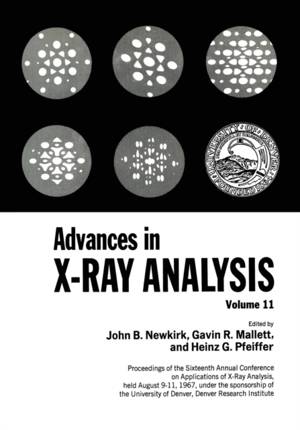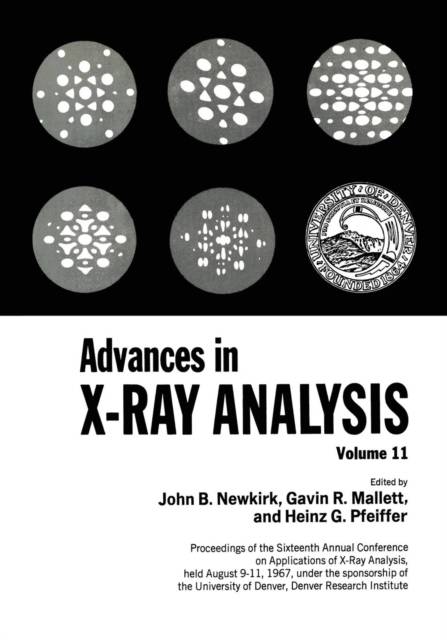
Door een staking bij bpost kan je online bestelling op dit moment iets langer onderweg zijn dan voorzien. Dringend iets nodig? Onze winkels ontvangen jou met open armen!
- Afhalen na 1 uur in een winkel met voorraad
- Gratis thuislevering in België vanaf € 30
- Ruim aanbod met 7 miljoen producten
Door een staking bij bpost kan je online bestelling op dit moment iets langer onderweg zijn dan voorzien. Dringend iets nodig? Onze winkels ontvangen jou met open armen!
- Afhalen na 1 uur in een winkel met voorraad
- Gratis thuislevering in België vanaf € 30
- Ruim aanbod met 7 miljoen producten
Zoeken
Advances in X-Ray Analysis
Proceedings of the Sixteenth Annual Conference on Applications of X-Ray Analysis Held August 9-11, 1967 Volume 11
John B Newkirk, Gavin R Mallett, Heinz G Pfeiffer
Paperback | Engels
€ 209,95
+ 419 punten
Uitvoering
Omschrijving
X-ray emission spectrography, while based on Moseley's work, as a generally useful analytical method had its genesis in the work of Friedman, Birks, and Brooks 30 years ago. The central theme of this conference, quantitative methods in X-ray spectrometric analy- sis, and the large number of papers on that subject attest to the growth of the application and usefulness of X-ray emission. It is a privilege to have as an invited speaker Laverne Birks, one of the original group that put X-ray emission into analytical chemistry. Determination of elements above titanium in the periodic table was considered the province of X-ray fluorescence, and most of the early development was aimed at the analy- sis of alloys. The papers in this volume on metals analysis accept most operational features as routine and have concentrated on the improved treatment of the observed data in order to convert them to more accurate results. As the treatment of matrix effects, geometry, and stability have been better understood, corrections have become routine. For most elements that are present in amounts greater than a few parts per million, determinations can now be done with accuracies rivaling wet methods. Trace quantities are being determined to lower and lower amounts, largely owing to improvement of equipment and development of concentration techniques. For most trace elements, X-ray spectrography has become the preferred analytical method. The develop- ment of improved methods for separating signals from noise should lead to major reduc- tions in minimum detection levels.
Specificaties
Betrokkenen
- Auteur(s):
- Uitgeverij:
Inhoud
- Aantal bladzijden:
- 499
- Taal:
- Engels
Eigenschappen
- Productcode (EAN):
- 9781468486780
- Verschijningsdatum:
- 10/10/2013
- Uitvoering:
- Paperback
- Formaat:
- Trade paperback (VS)
- Afmetingen:
- 178 mm x 254 mm
- Gewicht:
- 884 g

Alleen bij Standaard Boekhandel
+ 419 punten op je klantenkaart van Standaard Boekhandel
Beoordelingen
We publiceren alleen reviews die voldoen aan de voorwaarden voor reviews. Bekijk onze voorwaarden voor reviews.











